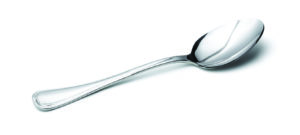 Eating together is good. Read “Eating Together” (www.generations808.com/eatingtogether) in our last issue. But Generations overlooked something in that article. One of the photos used to illustrate the article about Hawaii Food Bank programs shows a family sharing food, with members dipping into a communal bowl of noodles with their own chopsticks. We thought nothing of this time-honored way of dining until a Honolulu gastroenterologist pointed out that this culturally accepted convention may be hazardous to your health. “There are a lot of bacteria and viruses (mononucleosis; hepatitis A, B and C; H Pylori; herpes; HIV) in our saliva that can be transmitted to another diner.” And numerous observational, epidemiological data have suggested that the risk of COVID19 is related to shared meals or drinks. “The thing you need is a serving spoon or serving chopsticks.”
Eating together is good. Read “Eating Together” (www.generations808.com/eatingtogether) in our last issue. But Generations overlooked something in that article. One of the photos used to illustrate the article about Hawaii Food Bank programs shows a family sharing food, with members dipping into a communal bowl of noodles with their own chopsticks. We thought nothing of this time-honored way of dining until a Honolulu gastroenterologist pointed out that this culturally accepted convention may be hazardous to your health. “There are a lot of bacteria and viruses (mononucleosis; hepatitis A, B and C; H Pylori; herpes; HIV) in our saliva that can be transmitted to another diner.” And numerous observational, epidemiological data have suggested that the risk of COVID19 is related to shared meals or drinks. “The thing you need is a serving spoon or serving chopsticks.”
He is not alone in this recommendation.
A proposal by several Asian health organizations to use separate chopsticks and spoons for serving when people dine together was made at the height of the pandemic in 2020, suggesting diners avoid using their personal chopsticks to pick food from the same dishes, thereby reducing the chances of transmission of many diseases.
Since people have been eating this way for generations, the proposal was met with some resistance. Using a serving spoon or set of chopsticks may send the signal of wanting to keep your distance — the total opposite of most Asian social and cultural conventions. But this simple change in etiquette is a small price to pay for staying safe — and just another example of how we must adapt to our changing world.


Leave a Reply